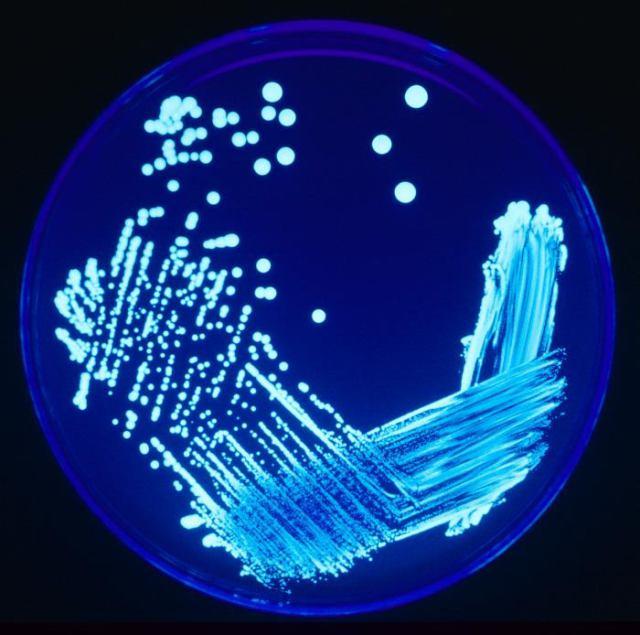Testing the waters: Legionnaires' disease and the Olympics
Posted on September 13, 2016 by Anand Jagatia
Over the next few weeks, we'll be exploring the molecular methods that enable scientists to investigate disease outbreaks, often in real time. This week, research from the Journal of Medical Microbiology on dealing with outbreaks of Legionnaires' disease.
Water was a big topic of conversation at the Olympics in Rio this year. Guanabara Bay, where the sailing took place, was reported to be full of untreated sewage, as well as high levels of harmful bacteria and viruses. And over the course of the swimming events, first the diving pool and then water polo pool turned bright green due to unchecked growth of algae.

Now that the Paralympic swimming events are in full swing (well done Team GB!), we can only hope that the officials in Rio can keep the water blue and avoid another incident. But if we turn the clocks back to just before the 2012 Olympics in London, a group of scientists here in the UK were also thinking about water – and how to keep people safe from the pathogens lurking within it.
Legionnaires’ disease, a potentially life-threatening lung infection caused by Legionella bacteria, is caught by inhaling contaminated droplets of water. The bacteria are naturally present at low levels in ponds and rivers, but if they make their way into man-made water systems – like cooling towers, hot tubs and fountains – they can multiply and spread. They grow most rapidly at temperatures between 20–45°C, and impurities like rust and limescale (often found in the above systems) can fuel them with nutrients to do so.
Legionnaires’ disease can’t usually be spread from person to person, but a single contaminated water source could infect many people if it’s found in somewhere like a hospital, a hotel or a gym. So keeping tabs on incidents of Legionnaires’ disease when they do crop up is important to prevent outbreaks.
“An outbreak of Legionnaires’ disease in the Olympic Village, for example, would have been on every headline all over the world,” says Massimo Mentasti, an Advanced Healthcare Scientist at Public Health England (PHE). “So in preparation, we were trying to develop a rapid testing and typing protocol.”
Analysing DNA of the infecting strains (known as ‘typing’) can tell you a lot. If the strains from cases of Legionnaires’ disease are all the same type, they probably all originated from the same place, which implies a common contaminated water source. But if they are different, that tells you that the increase in cases isn’t linked to an outbreak – for example, hot dry weather after heavy rain makes people slightly more likely to contract Legionnaires’ disease from any source.
“You have to get a typing result as soon as possible,” says Massimo. “That would quickly trigger an environmental response to find the source of the outbreak. If you shorten this process, you can potentially save lives because fewer people will contract the disease.”
The trouble is, normally this typing process takes around eight to ten days. This is because Legionella bacteria take a long time to grow in the lab, at least a few days, before you can harvest enough DNA for the analysis. They are also very fussy, and can easily be outgrown by other bacteria.

To get round this, the team used a modification of the standard typing technique that quickly amplifies Legionella DNA in their samples to high levels, prior to analysis. “The new method is quicker because you don’t need to wait for the Legionella to grow and then do the typing procedure,” explains Massimo. “In this case, we use this method directly on the clinical sample, as soon as we know that it contains Legionella DNA.”
This meant that PHE scientists were able to characterise the infecting strains from suspected outbreaks much quicker – in just one and a half days compared to over nine days with the usual method.
“The results were brilliant,” says Massimo. “So we decided to adopt this approach for urgent cases and clusters when we have reason to suspect something is going on.”
For other pathogens, this kind of technique may not be appropriate, for example if the strains are easier to grow in the lab. But the long time it takes to culture and then type Legionella bacteria in the lab, and the high potential impact of outbreaks, mean that the rapid protocol they have developed can be a very valuable tool. The technique also allows them to type infecting strains in situations when they can’t be grown – like if they have been killed by antibiotics given to the patient.
In the end, the method was used during the Olympics at an outbreak in the Midlands. Since then, it’s also been used to confirm or exclude outbreaks of Legionnaires’ disease and provide crucial results in at least six other incidents. The authors have reported their findings in the Microbiology Society’s Journal of Medical Microbiology.
“We don’t use this method on a routine basis,” explains Massimo. “But when we need a quick response, it’s another powerful weapon that we have to tackle Legionella outbreaks.”
